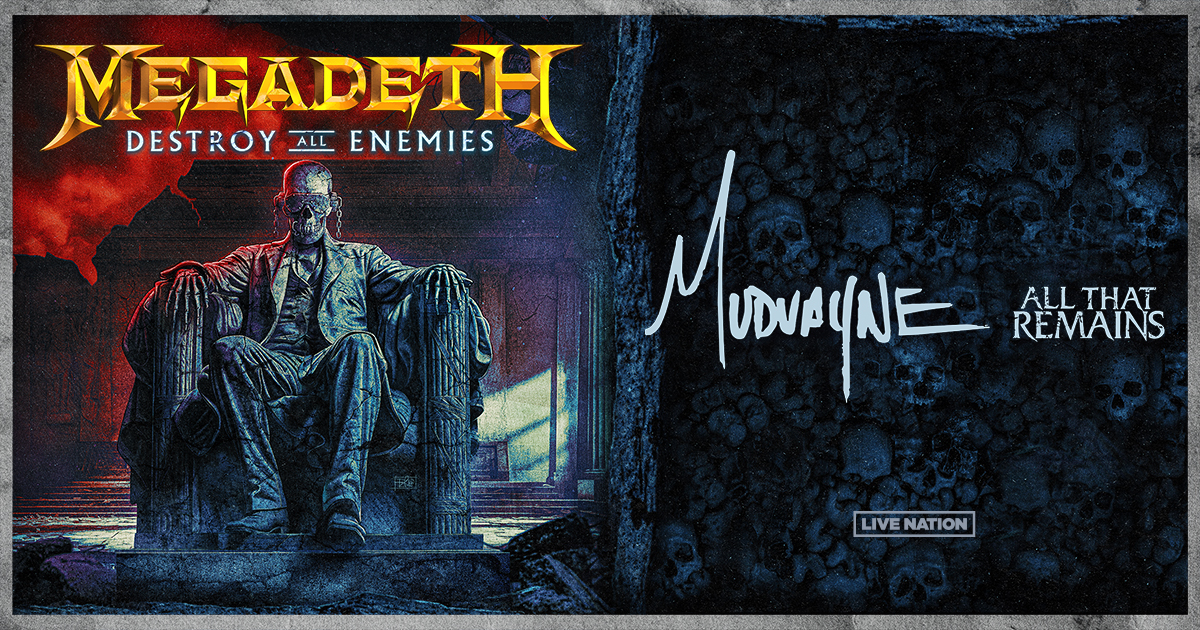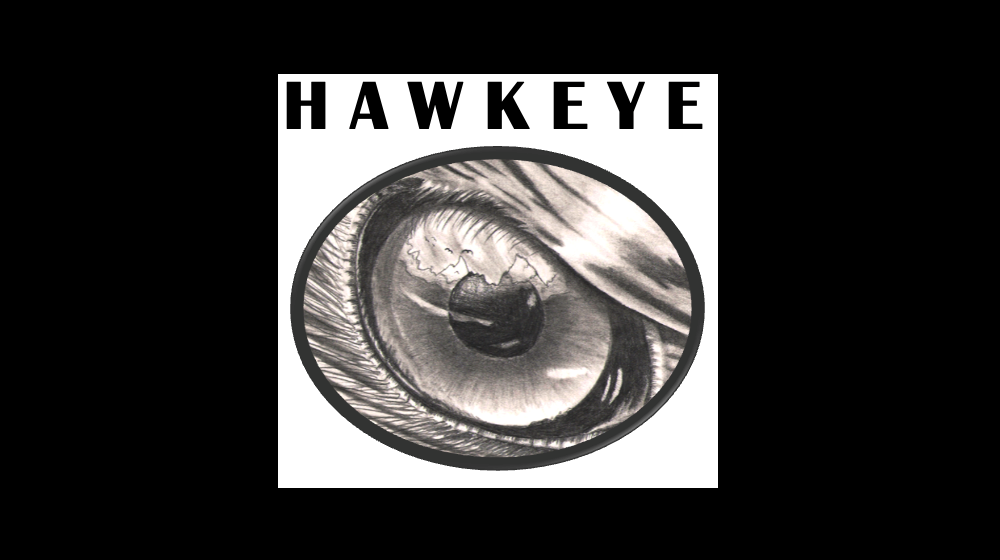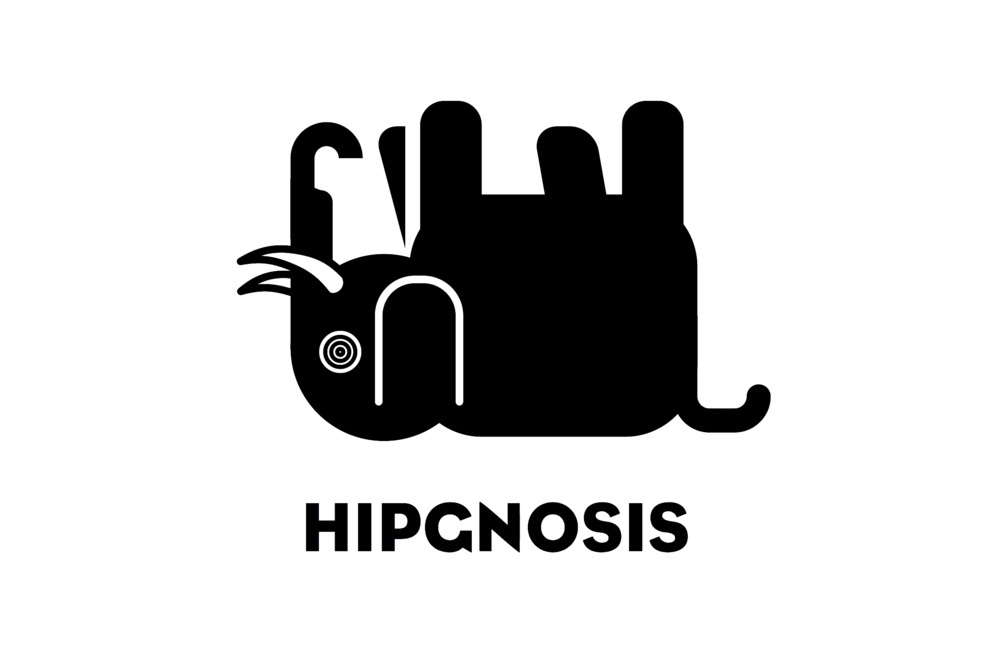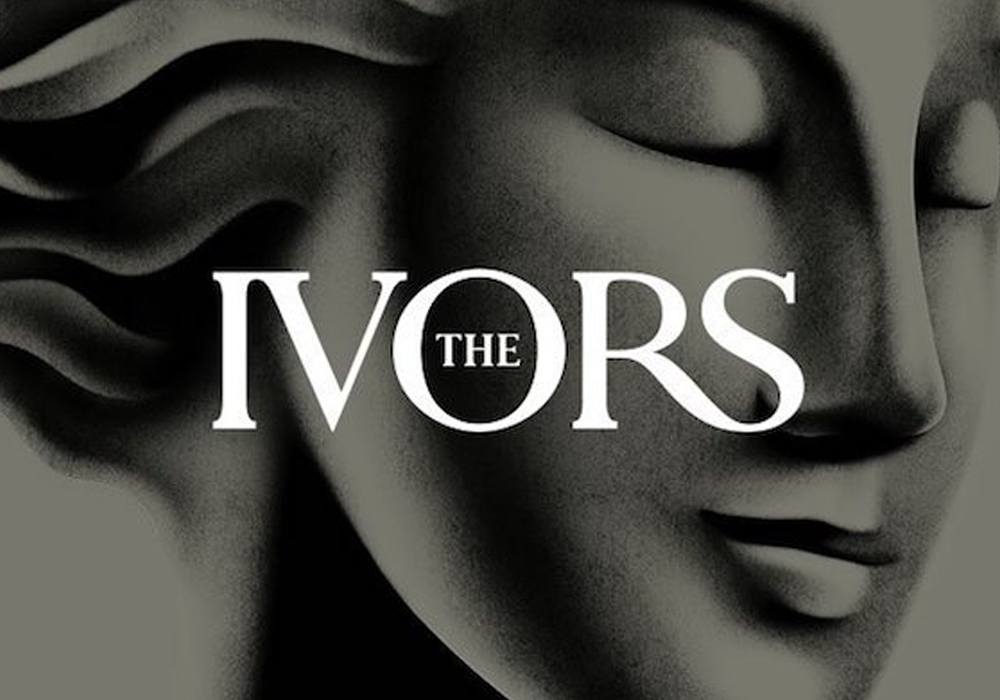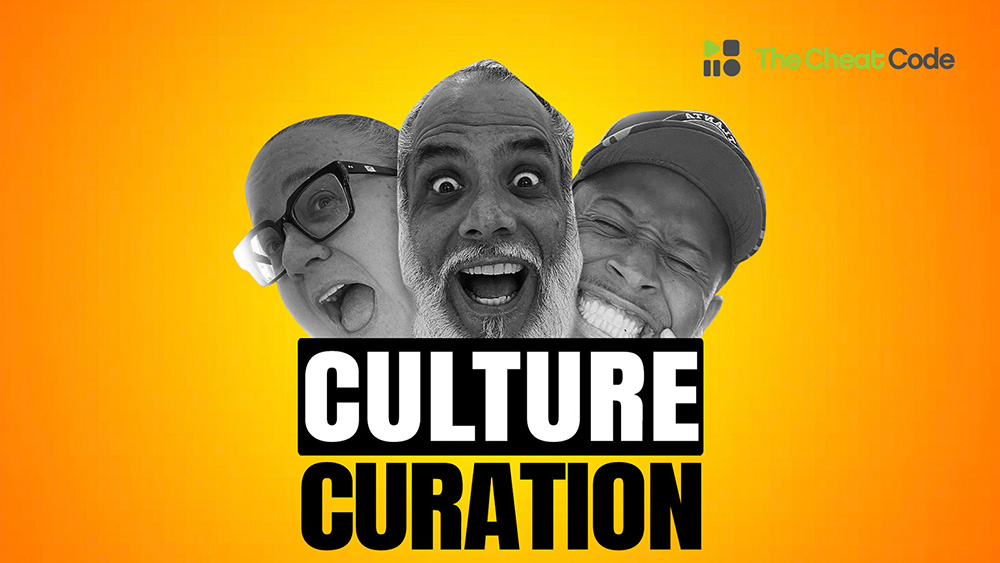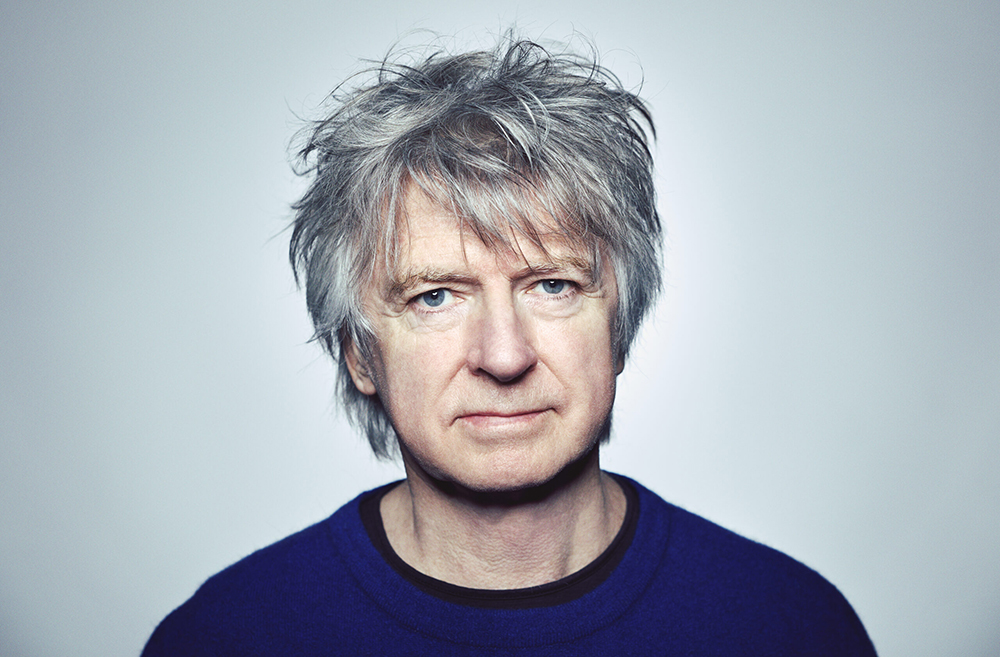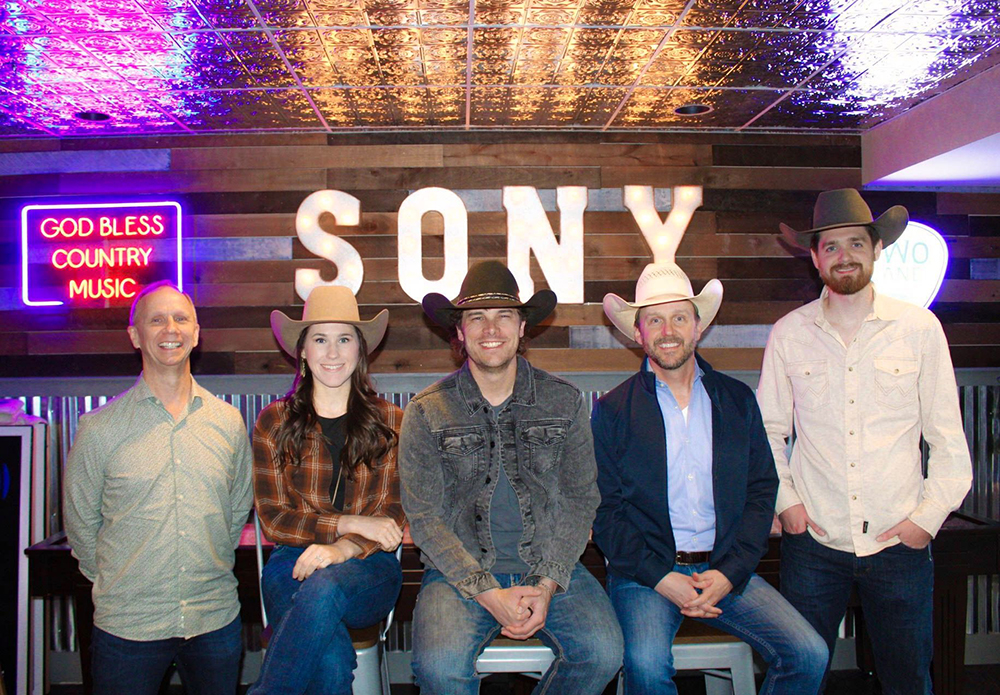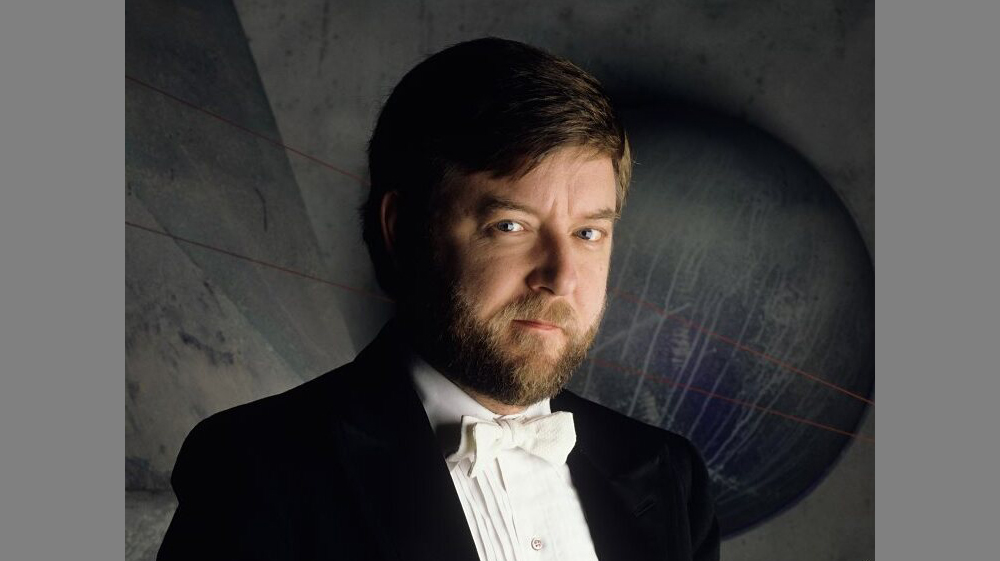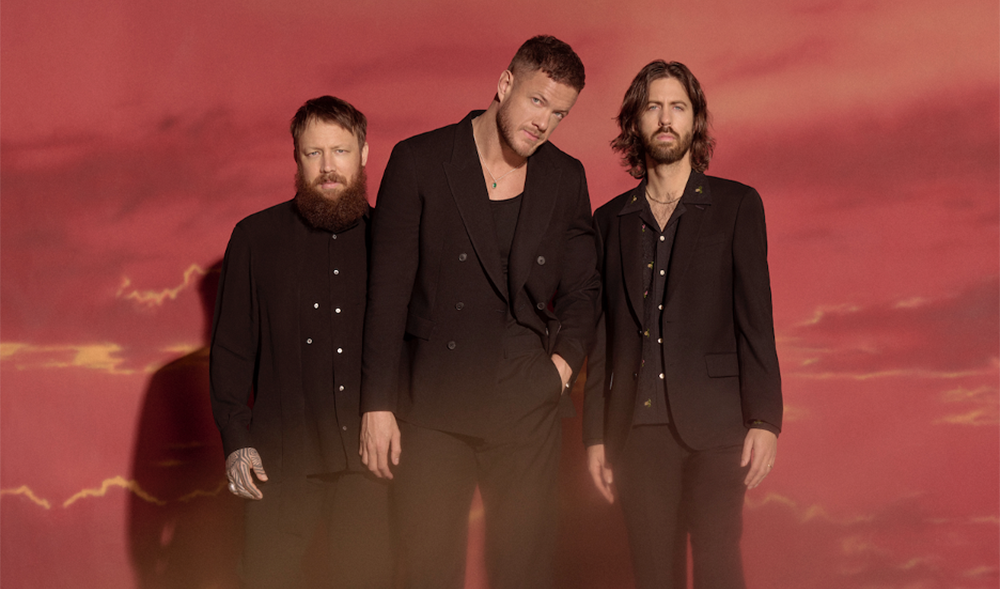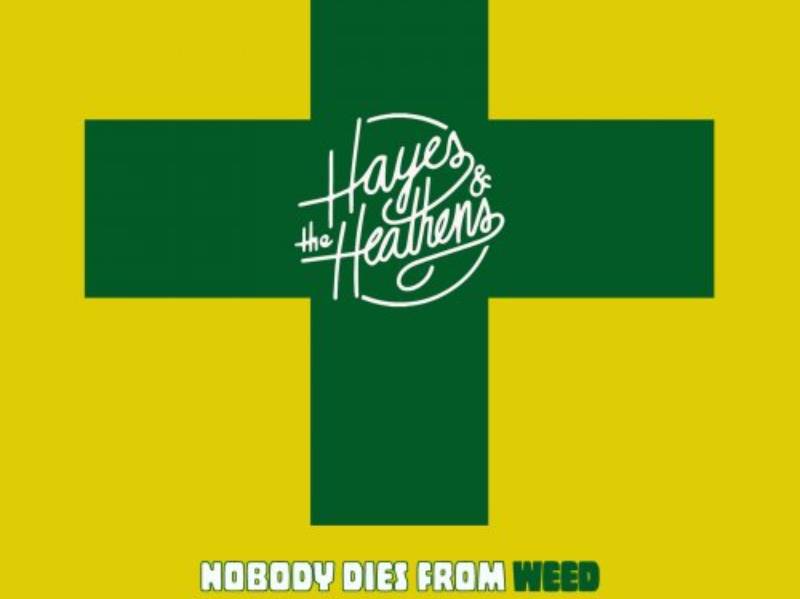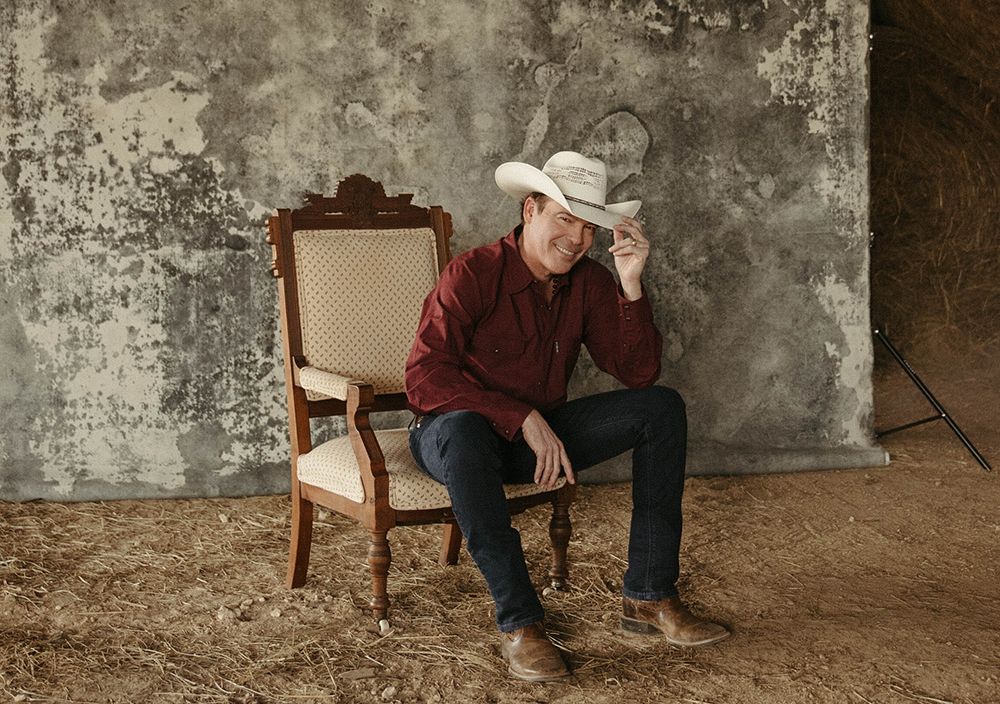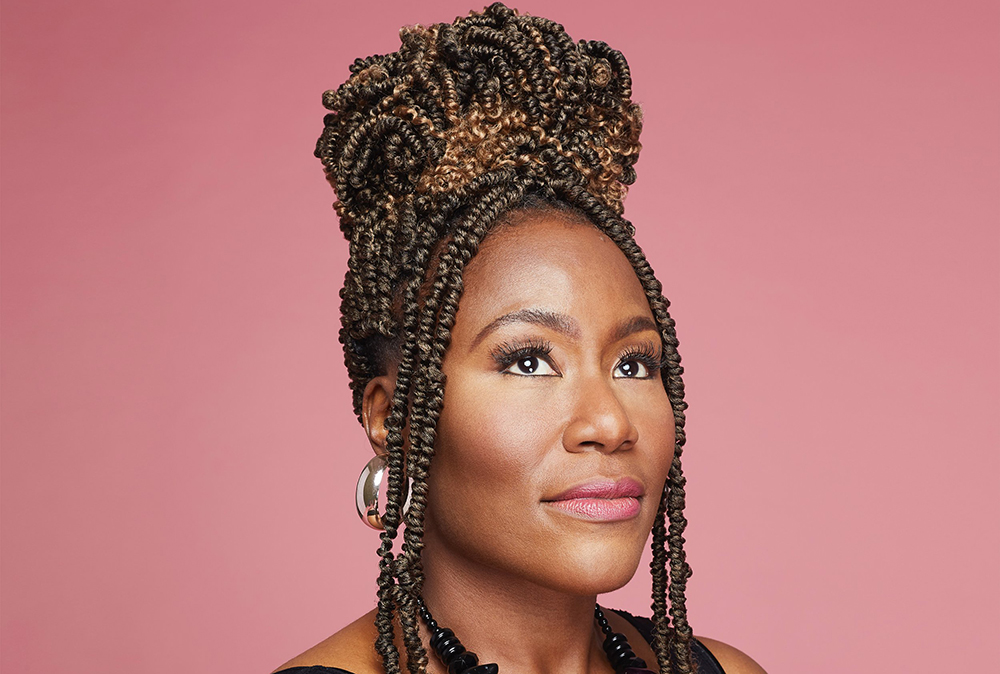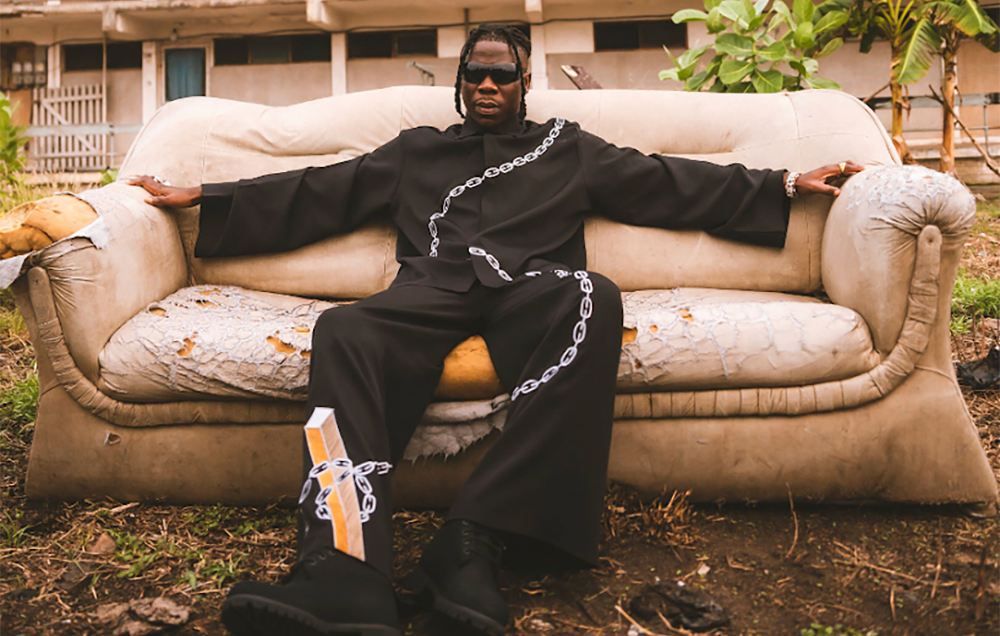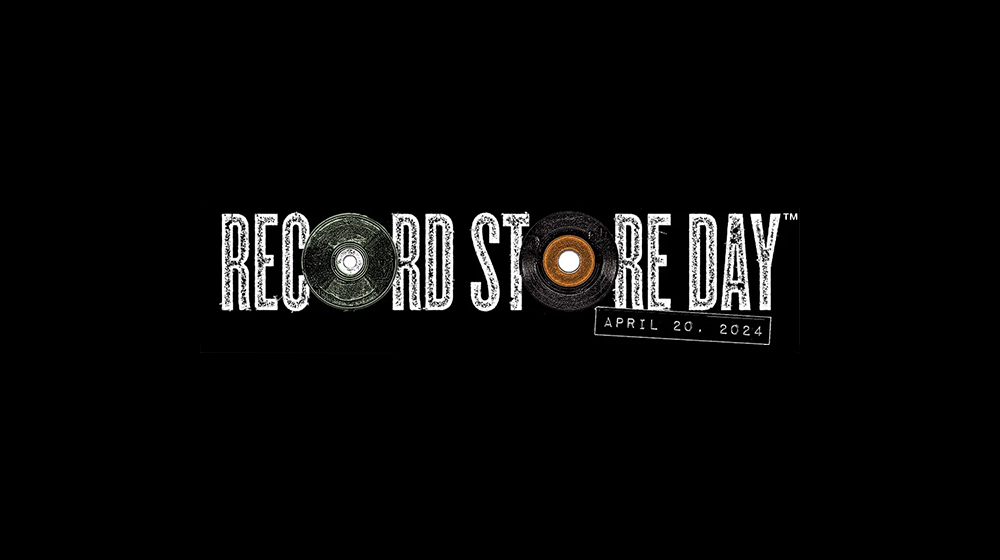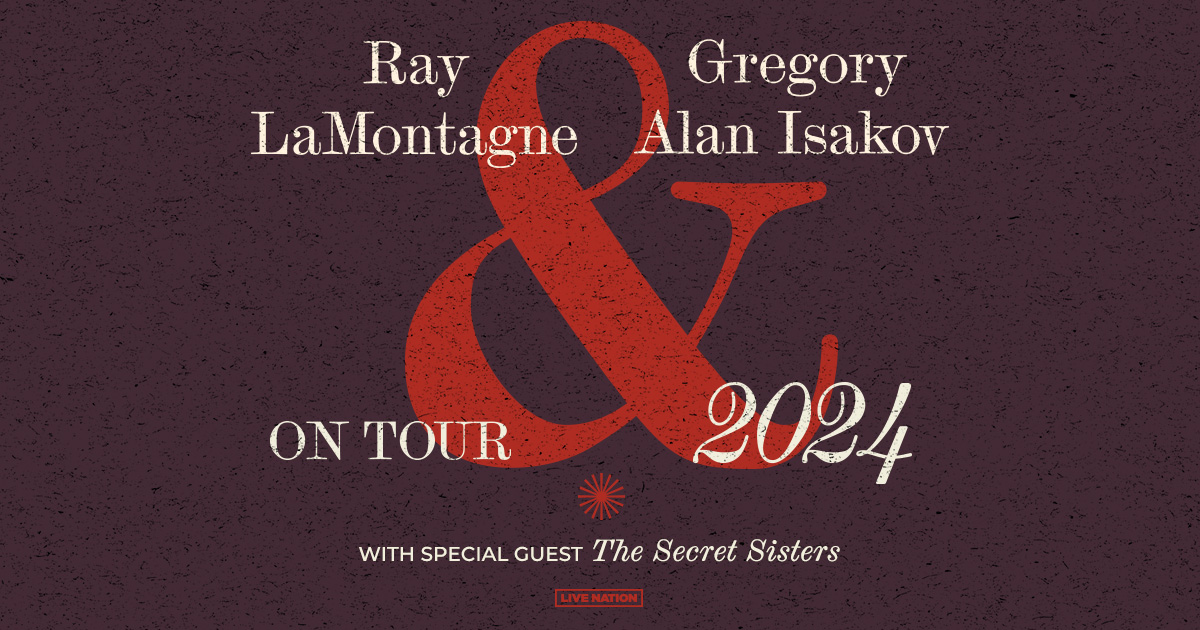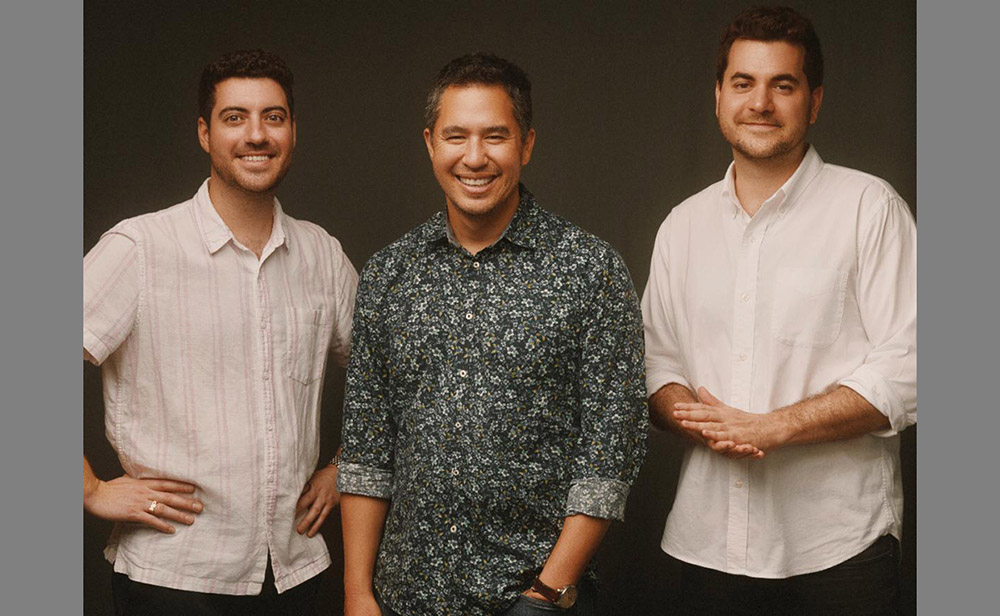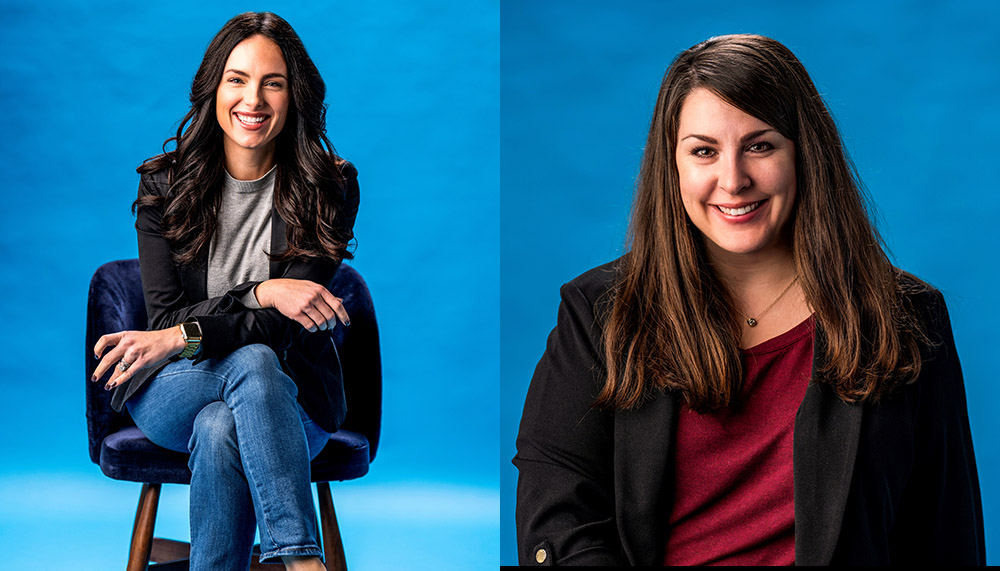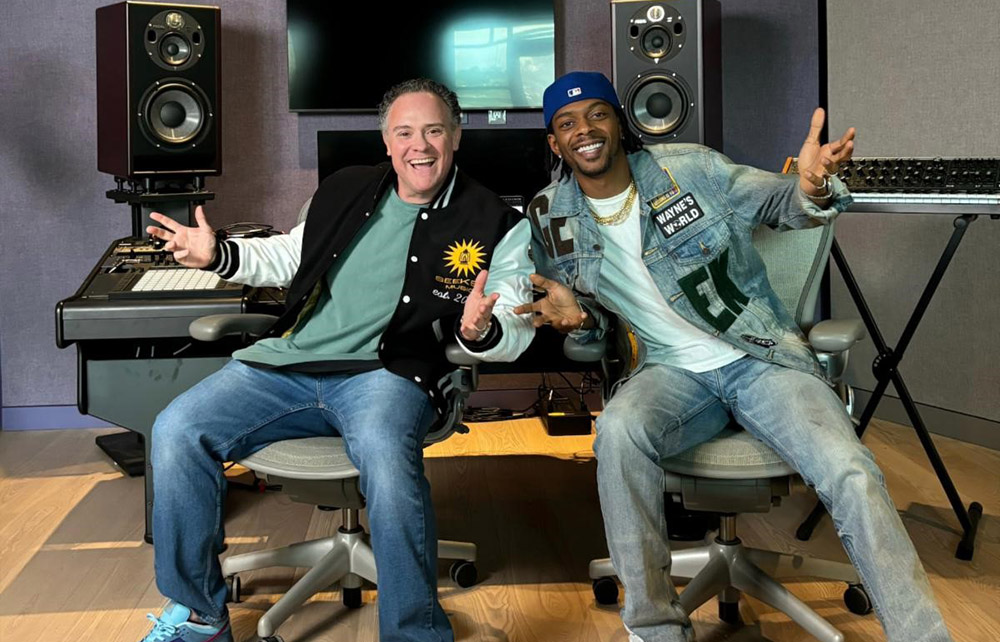This week In the Hot Seat with Larry LeBlanc: Amy Tinkham, owner, Zixi inc.
Most anyone working in the highest echelon of live entertainment today regards Amy Tinkham as a brand name twice over.
It’d take a sizeable book to adequately detail the two-decade career highlights of the renowned owner of Zixi inc. in Los Angeles.
From set design to lighting, choreography, and costumes, Tinkham has overseen countless productions in theater, dance, film, television, video, and art installations while additionally directing, producing, and writing.
A circus, perhaps?
Tinkham was the director of Ringling Brothers and Barnum & Bailey’s “Over The Top” national show in 2006; and creative director of the “Out of This World” national show in 2016, marking Ringling Brothers and Barnum & Bailey’s final circus after nearly 150 years of performances.
A royal bridal wedding celebration in Dubai?
Just keep reading.
Video production?
Among her early work in the video era was as a choreographer of videos by Aerosmith, the Real McCoy, Stacy Earl, Albita, Cameo, Jon Secada, and Babyface. In addition, she was staging director for the Dixie Chicks’ explosive “Top of the World” video in 2003.
Music tours?
She has choreographed tours featuring Madonna, Earth Wind & Fire, the Dukes, Aerosmith, and Motley Crue; and oversaw video direction for Britney Spears’ “Dream Within a Dream” tour in 2001-2002.
She has also produced or directed tours headlined by Martina McBride, Yanni, Chicago, Clay Aiken, Ruben Studdard, and Cheetah Girls. She also co-directed tours for Sir Paul McCartney, Backstreet Boys, and Mariah Carey. As creative director, her credits include tours by James Taylor, Paulina Rubio, and “The A.R. Rahman Jai Ho Concert: The Journey Home World Tour” in 2010.
After a young Tinkham, already a talented artist, discovered that dance could provide another dimension to her voice as a creative spirit, she studied dance, and worked professionally in New York City, and Los Angeles. She was first featured in scores of music videos, but quickly established herself in Los Angeles as a musical choreographer, and a daring one.
She also appeared in such films as “The Big Lebowski,” “Valerie Flake,” “Pursuit of Happiness,” and “Man on the Moon.”
Among her director credits are: Matthew Morrison’s PBS Special, “Where It All Began”; Disney’s “The Sound of Magic” (also as writer); PBS’ “Il Volo Live at Pompeii”; numerous “America’s Got Talent Live” shows; “Dancing With The Stars Live”; as well as Harry Belafonte’s “Stir It Up Show.” She has also been a collaborator and director on “American Dance.”
More recently, Tinkham has been working as director and writer on a 50 show national run of “Disney Junior Dance Party On Tour” which launches next month.
What’s the significance of your company name Zixi?
Zixi is from a modern short story by L. Frank Baum, the author who wrote “The Wizard of Oz.” It’s about the Queen Zixi of Ix. She was a Queen in charge of the arts. Although she was (considered) young, she was 600 years old. She fought very hard to get a cloak that she thought had a secret to everything in life until she learned that she herself was the secret, basically.
[“Queen Zixi of Ix,” or “The Story of the Magic Cloak,” is a book written by L. Frank Baum, originally serialized in the American children’s magazine St. Nicholas from Nov. 1904 to Oct. 1905. It was published in book form in 1905. The events of the book alternate between Noland and Ix, two neighboring regions to the Land of Oz.]
How do you pick projects? In recent years you have worked on “Dancing With The Stars Live,” and Ringling Brothers and Barnum & Bailey’s “Out of This World,” as well as James Taylor’s summer tour. Two years ago, you directed the theatre graduation performance of the Los Angeles High School of the Performing Arts.
(Chuckling) That was so much fun.
So how do you pick what work to do?
I wish I could say that I was picking and choosing like it was that organized. It is more what shows up. It all sort of comes to me. Most of the time, it works out. Most of the time. There are a few (projects) sitting in my inbox right now. Unless it’s completely wrong for me or that I don’t think I can offer anything that I do well to it…. they sort of just happen. It hasn’t been very organized at all.
As if you don’t have enough work on your plate.
Yeah, it’s very hard that because they are all moving pieces and in the past, especially when my (three) kids were little, I would be careful not to say “yes” just knowing that (an overlap) would occur. Now I am able to. Stay in development with a few (projects) at the same time and, depending on when they finally go out, hopefully, I can direct them. Sometimes I am the creative director and not the director which was the case with the last circus (“Out of This World”). I was not the show director, I was the creative director.
Do you have an agent?
I have an agent. Julie McDonald at MSA (co-owner of McDonald Selznick Associates) who has been my agent since I came to Los Angeles as a dancer, if you can imagine that. There were no agents for dancers, and she’s the pioneer saying, “Wait a minute. I’m going to take a telephone, and put it in the corner of this office, and get contracts for dancers.” That’s Julie McDonald. She’s a really interesting person.
[Julie McDonald is a pioneer in the field of dance and choreography representation, having become the first agent, while at Joseph, Heldfond & Rix, dedicated exclusively to dancer representation. At the time, backup dancers were commonly classified as “extras.” One of her first clients was Paula Abdul, who began her career as a cheerleader for the Los Angeles Lakers before rising to prominence in the 1980s as a choreographer in the music video era. In 2000, McDonald and Tony Selznick formed McDonald Selznick Associates.]
Many freelancers in any field get despondent when a project doesn’t go forth, but some freelancers have so many project balls in the air that they just move onto the next project. Of those 10 balls, two might work out, and it might take a few months or even a year. But the 10 balls are always in the air. Is that you?
I am totally like that. I feel also at this point that I understand that it (work) is more about the energy that I am putting out there. If you are just continually invested…..I won’t do something unless I find a way to love it. I already have an understanding that some (projects) will go nowhere, and then the one I don’t think is going to happen is the one that is off and running. I’m so used to that. I don’t know how to not do it that way. Although, definitely, there are ones that I am deeply in love with and that when they don’t happen they have sadness around them. I feel like it’s my normal way of working though.
Tell me about your role in 2014 as the creative director of a “Performance for the Royal Wedding Celebration” with the bride Sheikha Lateefa bint Maktoum in Dubai, produced by Teresa Taylor, and with a concept and event designed by DesignLab Events.
Somehow the Sheika found my agent Julie McDonald. The Sheika is a dance fan and, one way or another, she found Julie, and told her that she wanted to do this event for her wedding. Julie called me and several other people and said, “Can you present something to her?” Which was based on so little of what we knew. We just knew that she was an artist (a photographer). So I sent a pitch through Julie to Dubai, and she (the Sheika) picked me to do it. I called Teresa and asked her to produce it. It was the most fun. Part of it was because it was a female event (with 3,000 attendees). No men were allowed in the room. I had female everything, except the puppeteer (Roger Titely) who had to stand outside during the show. He could only be in the rehearsal. It was a crazy, but it was a beautiful experience I have to say. It was really something, and I had no idea of what we were walking into until when I saw the actual event. It’s a bride who takes off her hijab (head covering) and abaya (cloak), and she is presenting herself as a bride in a gorgeous Western gown, but just to women. She walks this long—they built a long walkway through a venue that is basically a convention center space, like a football field, and so we built the dance and a pre-show gallery that leads up to the reveal of her in this gown to do this walk that takes, I can’t remember, but I think it was a 30 minute walk.
[Sheikha Lateefa bint Maktoum described her wedding in Vogue (June 10, 2017), “The wedding was a once in a lifetime performance piece called Lucid Dream––the concept came through a conversation with Hiba Al Bakree and Mutasem El Baba when I told them that what they produce it is like stepping into one of my artworks. Under their guidance, a team flew in from the States to produce it and made my artwork move and breathe like never before.”]
What was your reaction when you received the nod to do that event?
If you had another two hours I would tell you about some of the other strange jobs I’ve had.
This wasn’t your strangest job?
Oh no. I had a stranger job where I was in Brunei teaching dance to a princess when I was about 27 years old. I was her dance teacher. I saw the whole world of Brunei, and I’m telling you, that’s a book. That one is a book right there with what I saw.
Last year must have been an interesting year for you because you were working with James Taylor while serving as creative director of “Out of This World,” marking Ringling Brothers and Barnum & Bailey’s final circus tour after 150 years.
Yes. I know.
A lot of pressure on you? The Greatest Show on Earth had faded in recent years; ceding its pageantry and entertainment direction to Cirque du Soleil. Long forgotten is the era when John Ringling North brought in Igor Stravinsky and George Balanchine to work with the elephants.
In 2015, Feld Entertainment announced it would stop using elephants in their shows by 2018, but the final performances with elephants was moved up to 2016. Feld Entertainment might have been able to save the circus, but, by then, it became too late, and losing the elephants robbed the circus of its biggest draw.
This was something that I wouldn’t have done if I didn’t have children. The first time when my agent said, “Do you want to make a circus, for real?” I said, “I don’t know how to do that.” I went and met with them (Feld Entertainment executives), and it was after my daughter Willow was born. One of the reasons that I said yes (to directing “Over The Top” in 2008) was because when I said, “I have three little kids,” they were like, “Well, bring them. They can be at rehearsals. They can be at everything.” So I truly made that show with Willow in a sling (baby carrier). They were fine with it. She was in my sling half of the time. There was no judgment about it. There were kids everywhere. What I fell in love with was really the humanity of the (circus) village. I can’t explain it, but I have never had that experience in any other show on such a grand level. There were generations of families that had been doing this for three and four generations, and some in every place in the world.
[“Out of This World,” which premiered in Los Angeles, July 14th, 2016, marked the 146th show created by the Ringling Bros. and Barnum & Bailey Circus. American showman P. T. Barnum and his partners had led the first circus to transport its entire show on newly built transcontinental railroads and coined the phrase “Greatest Show On Earth.” After joining with a competitor in 1881 to become Barnum & Bailey, they toured Europe before merging with another competitor, Ringling Brothers, in 1907.]
Working on a film set or on a national music tour is like working within a community, but people eventually disperse, and may not get back together again. A circus, with families that have toured together for several generations, is like a music tour or film shoot that continues on and on…
Oh my God yes. The love that they have for one another. There’s glory in it (being a circus performer), but it’s not a glory like being a film actor. They are risking their lives. It’s not a big financial gain to be in the circus as a performer, but the art of it, and the love of it is just so authentic. It felt not jaded compared to a lot of the shows, and the work that I have been doing. It was always refreshing. It’s the hardest thing in the world to do.
Working with the Ringling Bros. and Barnum & Bailey Circus twice did you have a lot of creative freedom? You have worked on music tours as a choreographer, tour director, and so on. It strikes me that the circus might offer more flexibility than working on music tours.
Yeah. There are definitely rules just like there is kind of a formula as when you are writing a film script. There are definitely rules that you have to understand, but it is such a blank canvas, that it is a little bit overwhelming. I even had some choice in who the acts were. Some of them, they would find in all of these remote places, and the circus had already contracted them, but a lot of times it was up to me to choose the kind of acts that would be there. Then to place them all in the arena, and have an overall concept, and figure out a way that they connected. Like you were mentioning, it’s not Cirque du Soleil where it is so otherworldly. It’s (the circus is) not fantasy.
The circus reflects reality to a large degree.
Yeah, it (the circus) is still kinda like my childhood and being at a basketball spectacle event. It’s a sporting event in a way that you really need to know that this is a guy who is risking his life, right now. There is no net underneath him. You really need to know that. That is sort of the bravado of the ringmaster setting that up so you understand that they (the performers) are risking their lives. That’s different from the Cirque format which is gorgeous, but it is also otherworldly; where you might not know that a 90-foot dive is so dangerous every day for that person. There are old-fashioned circuses, and there are American circuses like Ringling Brothers which was set that up, really, to let people know that. So it was kind of half-spectacle, and half-artistry. My job was to understand those rules, but also to break some of them. Sadly, yes it was too late with the combination of the animal rights (issues), but I think that also the other reason (for the closure) is that a lot of branded content does better now. By branded, I mean that somewhere else people have seen it. It is either a celebrity or it is something on television or those kinds of tours that are easier to promote. People know what they are. I think that is a bit more of an issue with successful live shows right now. That’s what it seems to me.
Meanwhile, as the visual standards of productions continually rapidly expand, major artists seek to place a distinguishing visual stamp on their work. I can remember seeing Janet Jackson’s The Rhythm Nation World Tour 1990, assisted by a team of 11 musicians, backup singers, and 6 dancers and with Anthony Thomas as chief choreographer, and I concluded that her videos had been brought to life onstage.
With the use of Oculus VR and other virtual reality technology today, live events seem to be moving beyond staging at the front of house to further breaking down the 4th wall between the performers and the audience, as the performance arts company Blue Man Group has done so successfully.
Almost every project that I have been developing involves audience immersion in some way or another. We are definitely in a time where especially young people believe themselves to be as involved essentially as anyone else onstage. So looking straight ahead at something for two hours is not as successful as selling out the whole space.
Part of the reason is that we now live within a larger visual culture, and people experience stylized visuals all day long. When you and I were growing up, we saw limited amounts of arresting visuals on television or in advertising or on store fixtures. People today are bombarded by visuals including via their computers, public lighting displays, film, TV, and from the stage.
Uh-huh, and attention spans are different. So you have to choose these moments throughout your show where you are sort of are like Beethoven in writing a symphony; the moment where you wake them (audiences) up again. You have to bring somebody from the back of the audience half way through the show, and you have to, like Blue Man Group, throw things out to the audience. I can’t think of a show where we are not doing that; where we are not trying to find ways to do that.
The chandelier falling in the ‘80s musical “The Phantom of the Opera” was such a moment.
Well, with an audience, if you are doing it well, you can win them over pretty easily. A chandelier can do it.
In the ‘50s American director, William Castle produced and directed a series of B-horror films with gimmicks like seats that tingled and skeletons that dangled above the audience.
Oh my God, I love this. I will totally look him up.
I loved what I saw of your work with Sir Paul McCartney pre-show part of his Back in the U.S. and Back In the World tours (2002-2004) which you co-directed with Jeffrey Hornaday. Such an unusual concept of using live figures moving through the audience for Paul to agree to.
It was another moment in my life that was—“Pinch me, I can’t believe that I am part of this moment.” It was totally his idea. He didn’t want to have a warm-up band or any other thing. He wanted it to feel sort of like a happening and a transition from the street before he enters, and sort of puts people in a surreal state before the concert. (Laughing) Maybe, it was a way to do drugs without doing them. I don’t know.
Did your relationship with Paul lead to you working with George Martin’s son Giles?
No. I just cold-called Giles years later when I was working at Disney on a project. I kept saying to the people at Disney, “It’s just like ‘The Beatles Love.’ It’s just how in ‘The Beatles Love’ that they use the music. You know what? I’m just going to call Giles Martin.” So I have a friend, Yves Aucoin, who does the lighting design for Celine Dion, and he knew him. Giles is wonderful. He’s become a very good friend.
[In 2006, George and Giles Martin remixed 80 minutes of the Beatles’ music for Cirque du Soleil’s stage show “The Beatles Love,” and Giles has remained the musical director since. In 2016, Giles and “Love” director Dominic Champagne decided to transform the show in a top-to-bottom makeover.]
Where are you and Giles on “The Who Project?”
I would say that it’s one of those (projects) currently sitting in my inbox. It got pretty far. For a minute, we were talking about doing it in New York with (producer) Randy Weiner as sort of a “Sleep No More” kind of an experience. But it is just timing. The timing of everything that is going on. Giles is so busy right now. He’s scoring a couple of films this year. So he got really busy. And he did all of the re-mastering of the Beatles recordings last year. I don’t know if you know this but Aerosmith may be doing a residency in Las Vegas, and that is something I may be working on. Giles may also be part of that.
[Aerosmith is reportedly in talks for a Las Vegas residency in 2018. The venue – not inked yet – will probably be the 5,300-seat Park Theater at the Monte Carlo Hotel & Casino, where Lady Gaga has her two-year engagement set to start in Dec. 2018.]
Isn’t “Adam the Musical” in your inbox too? That would be a theatrical adaption of the 2009 film, “Adam.”
That is. That is with Leslie Urdan. You’re Canadian, do you know Steven Page?
Of course, from the early ‘90s when he co-founded Barenaked Ladies which he left in 2009. It was just announced that Barenaked Ladies will be inducted into the Canadian Music Hall of Fame with an appearance by Steven with the group at the upcoming Juno Awards (on March 25th, 2018).
Yes. So Steven and I met in New York just recently. We had started to work on trying to conceive the movie as a musical, and then we had some composer dilemmas. Then they brought Steven Page in, and I met with him in New York. We had this great work session. I am waiting for him to send three or four music samples any day now. We really had such a great time in New York in the few days that we worked. It was one of those moments where I thought I could just stay. He’s so brilliant. This is the type of project that if I could stop everything else and do one thing i would do it because it just feels like it is the right kind of collaboration. It is very exciting.
The announced year-long Power Rangers Live tour, in celebration of Saban’s Power Rangers’ 25th Anniversary, has been pulled back and not re-scheduled yet. What’s the status of the tour?
It’s ready to go but it will have to be reworked a bit depending on when we go out with it. We were pretty far along. They pushed it back. I don’t know when they are going to go out with it. It’s been a minute since I even talked to (executive producer) Jonathan (Tzachor) about it, but we were really far along.
[“Power Rangers Live” is being directed by Tinkham, written by James Bates, and David McDermott, and produced by Red Light Management.]
At the same time, you have been working the past year with Red Light Management’s Jonathan Shank in developing the 50-show national run of “Disney Junior Dance Party On Tour,” a music-driven immersive concert experience, which kicks off March 14th in Southern California at the Thousand Oaks Civic Arts Plaza.
Exactly. Originally, a year or two ago, I met with the organizers of the Power Rangers Live tour. They had been trying to put together a Power Rangers tour and figure out what the demographic was, what demographic they were reaching out to etc. That had been in development and a discussion for awhile, and then Disney Junior came along. Then it was just a coincidence that, “Okay, we are ready to do both at the same time” which didn’t happen.
Your James Taylor’s collaborator, lighting designer Nick Whitehouse (CEO, Fireplay), and I recently talked about reaching the level of work experience that when you walk into a room everybody is working on the same high level as you are. Have you reached that level yet in your career where you know you are working with or bringing in pros? No battles over turf or someone defending a bad idea.
(Laughing) Nick is a good example. Working with Nick and Josh (set designer Josh Zangen) you have what you are saying. You have the common experience of all of your years and a dialogue that you don’t even need to have. You are already seniors. You are already in the master’s program. So you are already working at that level. You don’t have to over explain. You don’t have to bite your tongue so hard in a meeting because you can’t believe what you’ve just heard.
Like hearing, “Amy this is a great project, but I took it home, and my kids were looking at it, and I think we have some real issues?”
Oh, my goodness. I don’t need your child’s notes, thanks. I still tread those waters a lot of the time, but you try to choose your team. Even the technical people and producers around you, you try to choose the team that has also moved past ego. I don’t need…I need to make something that is really great. I don’t need everyone to know, “Oh, that’s an Amy Tinkham show.” Finding the people that have moved past ego, and enjoying the work, is so refreshing.
You may find the move past ego more in the live event sector than in film or television which teem with self-interested, non-creative parties. With live events, everyone involved knows the bottom line is, “How do we sell tickets?” In film, for example, everybody from the production head to the investment banker to the dentist in Des Moines who invested $150,000, sit in judgment
Ahhh, and I don’t know if I could sit through all of the screenings. Where everyone is filling out forms. My son was invited to a basketball movie where they had him fill out the forms. I just thought, “That poor director. What a nightmare.”
Whereas, early on in your career you had to go to third parties to get projects out.
Yeah, and you sort of had to be at the mercy of all kinds of personalities that could be scary or dysfunctional.
Where did you attend university?
I went to the University of Colorado. That was as far west that my father would let me go.
Boulder, Colorado where east meets west and where north meets south. The city attracts people from all parts of America, and its population is younger than the national average, largely due to the presence of university students.
Oh, it was amazing. It was such a great time for me. The dance department was 100% modern dance with the most severe and strict ballet teacher on the planet my favorite, Larry Boyette, and those two things changed my life. Just the environment from being a girl from Indiana to Boulder, Colorado. Although it was the ‘80s and not the ‘60s–I wish I had been there then–but it was a polar opposite of life experiences. I loved my time there.
Back then Chuck Morris used to operate the Tulagi nightclub on University Hill in Boulder, hiring such acts as the Doobie Brothers, Bonnie Raitt, the Eagles, Linda Ronstadt, ZZ Top early in their careers.
Oh my God, Tulagi. I lived there.
Did you also go to The Sink across the street from the University of Colorado? A great beer and a hamburger place.
Of course. Oh, my gosh.
Boulder/Denver a great music market with the Boulder Theatre, the Fox Theatre, and The Ogden Theatre in Boulder; The Bluebird Theatre, and Paramount Theatre in Denver; and, of course, the Red Rocks Amphitheater outside of Denver,
There’s also Macky Auditorium Concert Hall (at the University of Colorado) We did a bunch of stuff there.
How long where you at the University of Colorado?
I was there four years, and then I went to New York straight from Boulder.
To work as a dancer?
Yes.
Tough town New York for a young dancer looking for a break.
Oh, God. I don’t even know I should tell you this. My mother would be so upset. I was about to graduate. I had one geography class. I had not finished. Nina Wiener, a postmodern choreographer in the ‘70s to the ‘80s who came from the Twyla Tharp Dance Company, visited as a guest artist in Boulder. Told me if I came to New York by a certain time I would be able to perform with her at the Brooklyn Academy of Music. So I left. After four years and with not finishing geography. I was Phi Beta Kappa at CU, and I did not graduate just because I wanted to dance in New York. A brilliant move on my part. I’m sure that I could figure out how to get the credit now, but I have just never done it.
Did you get to dance in New York City?
I danced with Nina at BAM (the Brooklyn Academy of Music), After that, I stayed and I pressed on, but that’s what I did. That was when I was young. I thought that was all that I ever wanted to do. “I just want to dance in a dance company. That is all I want out of my whole life.”
I loved the phrase “pressed on” which means starving in New York City.
Oh my God. Well, I lived with my cousin in Brooklyn before Brooklyn was as nice as it is now.
You studied with the revolutionary modern-dance choreographer and dancer Erick Hawkins.
I did. Oh my gosh, I loved him so much… That was a very important part of my life.
[Erick Hawkins’ dance company toured with the Hawkins Theatre Orchestra, an ensemble of 7 or more instrumentalists. In addition to Lucia Dlugoszewski, his collaborators included composers Virgil Thomson, Alan Hovhaness, Lou Harrison, Henry Cowell, Dorrance Stalvey, Toru Takemitsu; and such visual artists as Isamu Noguchi, Ralph Dorazio, Helen Frankenthaler, and Robert Motherwell. ]
Among Erick Hawkins’ influences were the dances of the American natives, Zen, as well as the Greek classics. So he made a big impression on you?
He made a big impression because there was a very spiritual essence to his work. You are talking about the Buddhists and the native Americans. He had a piece “Here and Now With Watchers” (created in 1957 with a score by Lucia Dlugoszewski) and I will never forget when I saw it. It struck me on such a visceral level because it is why I love theatre. It is why I love being in live entertainment. The moment is the moment, and there’s nothing else. It is very Zen. It gets you off of yourself. It gets you off the past. Off of the anxiety of the future. You are just in the moment. That time with him really connected for me. My spiritual quest was my artist quest. It was all connected, It was all one thing, and he was really that teacher for me. That was my church. The work and the art is my church. It always has been. I’m very passionate about that because when people say they don’t believe in God; that they don’t have a spiritual connect, I don’t judge it, but I’m always taken aback by that because the beauty of the moment is like that is where God is for me. And it does matter. Every show there will be that moment.
With so many projects you are able to meld dance, choreography, and the visual arts.
Yeah, I do feel that I do bring everything from my life, even my terrible years as a bad actress. I bring all of that. I think that I bring all of the colors of the work and the life that I’ve had to the table every time. Dance is sort of my secret go-to almost at the very beginning. It doesn’t matter what show I’m doing I have a portal in, and it’s always somehow connected to dance. I’m kind of forever a dancer in that way.
You remain connected to the Global Dance Initiative with Teresa Taylor that promotes the positive power of dance.
Yes. We have some goals which we haven’t quite reached yet. The idea is to really to…It (dance) really is the language that everybody speaks, and we are working on ways to make those connections in big installations and with performance pieces. It sounds like it is bringing all of the ambassadors, and all of the people together who are doing such good things with dance. Again, it‘s another way the internet can be so amazing that you are able to make those connections all around the world.
You had mentioned that Julie McDonald has been your agent since you came to Los Angeles as a dancer. So she was responsible for you being in the Coen brothers’ remarkably funny 1998 film, “The Big Lebowski?”
Exactly. I have to tell you, here’s a sidebar. “The Big Lebowski,” with as many things that I have done, the people that know that I have been in “The Big Lebowski” are the most thrilled with that. We had no idea at the time what would happen with that film other than it was the Coen brothers so, of course, it’s going to be great.
You were a dancer in the film?
I’m just a showgirl with a bowling pin headpiece on my head. I’m one of the bowling pin girls. I think at that point i had made a short film that had gone to Sundance (the Sundance Film Festival).
That was “The Acting Thing” in 1996.
Yes.
After “The Big Lebowski” you were in “The Man In The Moon,” the 1999 American film about Andy Kaufman, starring Jim Carrey.
I was a showgirl in that as well.
Were you then trying to break into Hollywood as an actress?
I did study acting at the same time that I was dancing but just…I’m not sure. I think I was pretty terrible as an actress, honestly. I think that I was pretty bad, but also that it was around that same time that I started to work for choreographers and, in time, became a choreographer. It (choreography) was just sort of a path that I knew I could do, and what I loved to do. That just sort of became my path. It was accidental, really, but I loved it. I went from assisting choreographers to choreography while becoming more interested in making the project rather than making the dance.
You didn’t care as much about being in films?
Not really. It wasn’t driving me that hard. There’s part of my personality too that I didn’t like the idea of waiting to be chosen. I don’t like that feeling. I wanted to choose. I wanted to make things. I didn’t like showing up and sitting in a line of women and being one of…
Oh, the cattle call. Rejections can be brutal.
And waiting to be chosen. To prove that I was worthy. It just didn’t work for my personality, really. Being able to be more in charge of my own destiny felt better, and about our kids today, I think that’s what they have. They are so lucky they can say, “I want to act. I want to write the music, and I want to film and edit it, and put it up, and post it.”
Given your work and personal schedules, having three children, I wasn’t sure you could find time for an interview.
Actually, I just got off the phone with my husband (TV host Eric Stromer) who was like, “Listen you have to do your day like you pretend that you are in school. One hour of this project, one hour of the other thing that you are writing; and then take a dance class.” It was hilarious. I was like, “Okay. I will try it.”
Both you and Eric went to the University of Colorado, but you didn’t meet until you were both living in Los Angeles.
But I already knew who he was from college. I never met him there, but I was just was across the street. I was sort of in my modern dance performance dance mode, and he was more of a big man on campus kind of guy.
Well, he’d done a Kit Kat commercial by then (1978) while in high school. Like many people who come to Los Angeles, he wanted to be an actor.
(Laughing) Oh my God, I can’t believe how much you know.
I recall him in the NBC-TV daytime drama “Santa Barbara” in the ’80s.
Yes, he was in “Santa Barbara.” What he and I have in common too, among a lot of other things, is that he was also a really bad actor. He’s a great TV host, but we always laugh at those “Santa Barbara” clips. They are hilarious.
I also remember him doing the home-improvement TV shows “Hideous Houses” on A&E, and HGTV’s “Over Your Head.”
Yes. He’s been doing those type of shows. He now co-hosting with Adam Carolla on Adam’s podcast (“Ace On The House”) now.
Wasn’t he also on KFWB radio in L.A. doing the “Home Wizards” segment a long time ago?
That was hard for him. He had to be the straight man and Eric is silly.
Was it his humor that attracted you?
There’s nothing better than someone with a sense of humor. He’s hilarious
Do you still live in Northridge in the San Fernando Valley?
We do. We are still here. Who would have thought that I would end up here but we…
Were you living in Northridge during the 1994 earthquake which killed more than 60, injuring more than 9,000, and damaged more than 40,000 buildings?
Well, we got here after the earthquake. The big earthquake was before we bought this house. We moved here because all of my kids went to the Waldorf School that is literally two minutes away. I was very passionate about them when they were very small and because I worked I was unwilling to give up freeway time to get them to the school. So we got a house that is almost walking distance to that school. You can still see the damage because of the quake around the neighborhood. People were able to buy these big properties that were so not sub-divided. I was happy to do it, but it is sort of a cultural wasteland a little bit, other than I can get everywhere pretty quickly.
Not many people have a waterpark in their backyard.
It is a waterpark. How do you know these things?
With three kids how do you and Eric balance your family life, and careers?
Well, you would laugh if you were at our house. We have made it work. It is chaos most of the time. It’s fun, but it is total…We always joke, “Why is there nobody in our house that is OCD (Obsessive Compulsive Disorder) which ends up being okay. It’s just that it is always chaos. It is, basically, that we play it by ear almost every day. That is how people know our family, and that’s how our kids are. The front door and the back door are always open; kids are coming in and out which I love. It makes my mom crazy when she visits, but it is an everybody is welcome type of home. We just wing it. There have been times where I have paid the price professionally for sure because it is just too much mentally, spiritually to hold all of that together, but I wouldn’t have done it any other way, honestly because I didn’t want to miss anything that the kids were doing, and Eric and I just…sometimes we fail at it, but we just tag team like crazy.
You wrote a beautiful note to your son Wyatt as he was starting college…
Oh wow.
You wrote, “What I have been telling him since he was a tiny boy—to let no one take his light, and shine it even brighter in the face of fear.”
You are going to make me cry. I can’t believe that you went there. That’s amazing.
Was this advice for a probable actor? While at the Los Angeles County High School for the Arts, Wyatt portrayed Rabbi Joseph Spielman in “Fires In The Mirror,” a play by Anna Deavere Smith about the Crown Heights Riots of 1991. Is he going to be an actor?
Well, Wyatt is a bit of a renaissance child. He always has been. Just recently, I transferred all of our family videos, and we noticed that (trait) from a very tiny age. I took him to work with me a lot because I only had the one kid. It’s much harder with three, but when it was just Wyatt, he went with me to rehearsals, to overseas. We went on tours together. He was at the circus when I built the circus. So he has kind of got a bit of all of the arts in him, and we are waiting to see which one he will land on. He’s a filmmaker. He’s an actor. He’s a beautiful composer. He’s a sophomore at the University of Michigan. He got in for theatre. He’s hilarious. Kids now are much more able to be multi-disciplinary. I wish that I was growing up right now.
What a great age to be creative, and to be growing up.
Oh, it’s amazing.
Today’s kids can be scanning YouTube, and discover music and films from the other side of the world or watch Leonard Bernstein conducting the New York Philharmonic and playing piano in a performance of George Gershwin’s “Rhapsody in Blue” at the Royal Albert Hall in 1976. We couldn’t do that.
Oh no. My ability to do research today has greatly grown as well. I won’t do any show without a deep (research) dive, even if nobody needs to know as much as I know. I do research for every show that I do, and the internet has made it so wonderfully easy. We used to watch dance films at the Lincoln Centre Library. The only way we could see the research back then. So it’s 100% kids being able to see what is available in the world I think that it is causing both wonderful rebellion and also terrible trolling, and everything in between.
A generation is being influenced music, films, and multi-visuals coming in via the internet from around the world. And by gaming content.
It is just completely different today, and Wyatt is the type of kid that with his laptop puts it all together, and does remixes. When he was at home I would hear Toto upstairs. “What is he doing with Toto? How does he even know that song ‘Africa?’” He’s done a remix, and he’s put a video to it, and he’s got camera equipment and he’s out shooting in the tunnels of Los Angeles. It is just unbelievable. I would have been exactly the same today. Wyatt, in one of his tunnel shoots, got stopped by the police because someone had phoned in that there were terrorists in the tunnels in downtown Los Angeles. Yeah, there were a bunch of kids, and many of them were not Caucasian. So, of course, some idiot was like, “Oh there are terrorists in the tunnels,” and they got stopped in the middle of the night.
Then there’s Dusty, who at 14, is following in his grandfather’s footsteps in playing basketball with the L.A. Bobcats. Your father Richard, while at DePauw University in Indiana, was co-captain of the varsity basketball team in his senior year, and was a state college track champion.
Yeah, isn’t that amazing? Dusty has just been invited to play on a national team called the Thomas Team which is very exciting because that’s all that he does. He’s myopic. Even if we tried to get him to do other things which we used to, he won’t.
You father, who was an attorney, opened Indianapolis’ first tennis club with his buddy John DeVoe in 1960. in 1967, he became co-founder and co-owner of the Indiana Pacers; and co-founder and special counsel of the newly-formed American Basketball Association.
Yes, and he’s just co-written a book called “We Changed The Game.” I was home at Christmas with him and Bob Netolicky (an original Indiana Pacer and one of the three writers of the book, including journalist Robin Miller) to try and help them. It is just about to come out. It’s a pretty funny version of the rebels that they were. One of the titles of one of the chapters is–I forget the name of the guy who was the head of the NBA at the time–but the door flew open during the merger (with the ABA), and he said, and I think that the title of the chapter is, “Which one of you mothers is Tinkham?”
The American Basketball Association merged with the National Basketball Association in 1976. What’s overlooked is the role ABA had in modernizing and popularizing the NBA with such things as the three-point shot.
At that point, it was heart-breaking for us because it was merging the Pacers into the NBA as the ABA folded which for us was devastating. My dad still did everything he could, and he did it successfully to get the Pacers into the NBA. But this guy hated my dad, and the very last thing that he said, which is ironic because what my kid Dusty does all day long, is that he said to dad, “By the way the three-point shot (one of the symbols of the ABA) will never be in the NBA,” and shut the door. It makes me so happy that with my kid, it’s his best thing.
How many kids in your own family?
I have three siblings from my mother/father connection, and I have two step, and, one half. So there’s 7 total. But I have three siblings from my mom and dad.
How about your daughter Willow who is now 11?
Willow is just this very old soul. She’s a little activist. It’s hilarious. She’s just been about social justice since she was tiny. The teachers would say to me that she’s so concerned when something isn’t fair. With everything she does, she is just a young activist. She wrote this blog after going to the Women’s March about what it means to be a feminist.
As Watergate marked a generation, kids now are puzzled about what they are seeing from Washington on today’s 24/7 news cycle.
Oh, yeah.
For today’s generation of young kids, what’s happening in American politics is upsetting.
We don’t have the TV running all of the time in our house, but for a while, especially for Willow’s sake, I tried to not just have the rhetoric on that was all of the sexual rhetoric. It was just too much. But, at a certain point, I have had to step up to the times and talk to her about it. She’s hearing it all. Forget not saying the word “pussy” when I was a child, I wasn’t allowed to say the words “shut up.” It became like, “We should talk about it because it is everywhere.” When Donald Trump won, we were watching the results, and she was just looking at me like, “Can you make this stop? Make this stop.”
Your closeness to your children is admirable. I’ve met so many brilliantly creative or successful business people who were never there for their kids. To me, someone who is a failure is somebody who didn’t care for their kids. Never mind what their accomplishments are.
Yeah, this family has been my biggest thing. People say, “Stop talking about your kids so much.” It sounds corny, but my greatest work of art is the kids. So I don’t take it lightly. It’s not separate. What woman was it who said, I don’t talk about my kids in interviews?” I was like, Really?” because I, as you see, could do the whole interview on my kids.
Your kids are also part of who you are as a creative spirit. There are likely things they taught you that you have brought to your work. I can’t imagine them not weighing while you are working with Disney, the Ringling Circus, or with the Power Rangers.
There’s 100% of that in almost all of the work. If you talked to them, I think they would say that they think that they are part of my company. They walk in and out. They pick out things. They show me (internet) links. When I was building the first circus show,“Over The Top,” I took toys, and I did a mini-white model before the regular white model; where all the toys were on the dining room table. I had tiny action figures and trapezes and blocks. In the second circus “Out of the World,” I had basketball with these awesome basketball players from Chicago. I did that totally for Dusty. There was a unicycle troupe from Chicago that has been around forever. Like third or fourth generation. We put them in the show, and they were awesome. It was, “We need some more boys’ stuff in this show.”
From dancing, how’s your arthritis in your feet and knees?
Oh my God, I don’t have arthritis in my feet, but I have it in my neck. My neck is just a disaster from the music video years of dancing where nobody warmed up. Nobody did anything. You were on a set for 200 hours. My neck is just ruined.
I have arthritis in my feet from two decades of martial arts, much of it on wooden floors.
I was very involved with capoeira for about five years.
That’s Afro-Brazilian martial arts combining dance, acrobatics, and music.
It is just the greatest. I love it so much. You are barefoot, and it’s dance, but it’s martial arts, and there’s live drumming and singing.
Music is so integral to capoeira.
It is just the most joyous, wonderful martial arts. But there’s a lot of low ground movement in it, so it really hurt my knees. I had to step away from it. I did it all through the first circus because there’s a lot of people from Brazil in the circus. There was a bunch of us including the ringmaster and the dancers. We would do an early morning capoeira session. That was so much fun.
Larry LeBlanc is widely recognized as one of the leading music industry journalists in the world. Before joining CelebrityAccess in 2008 as senior editor, he was the Canadian bureau chief of Billboard from 1991-2007 and Canadian editor of Record World from 1970-80. He was also a co-founder of the late Canadian music trade, The Record. He has been quoted on music industry issues in hundreds of publications including Time, Forbes, and the London Times. He is co-author of the book “Music From Far And Wide.”




















